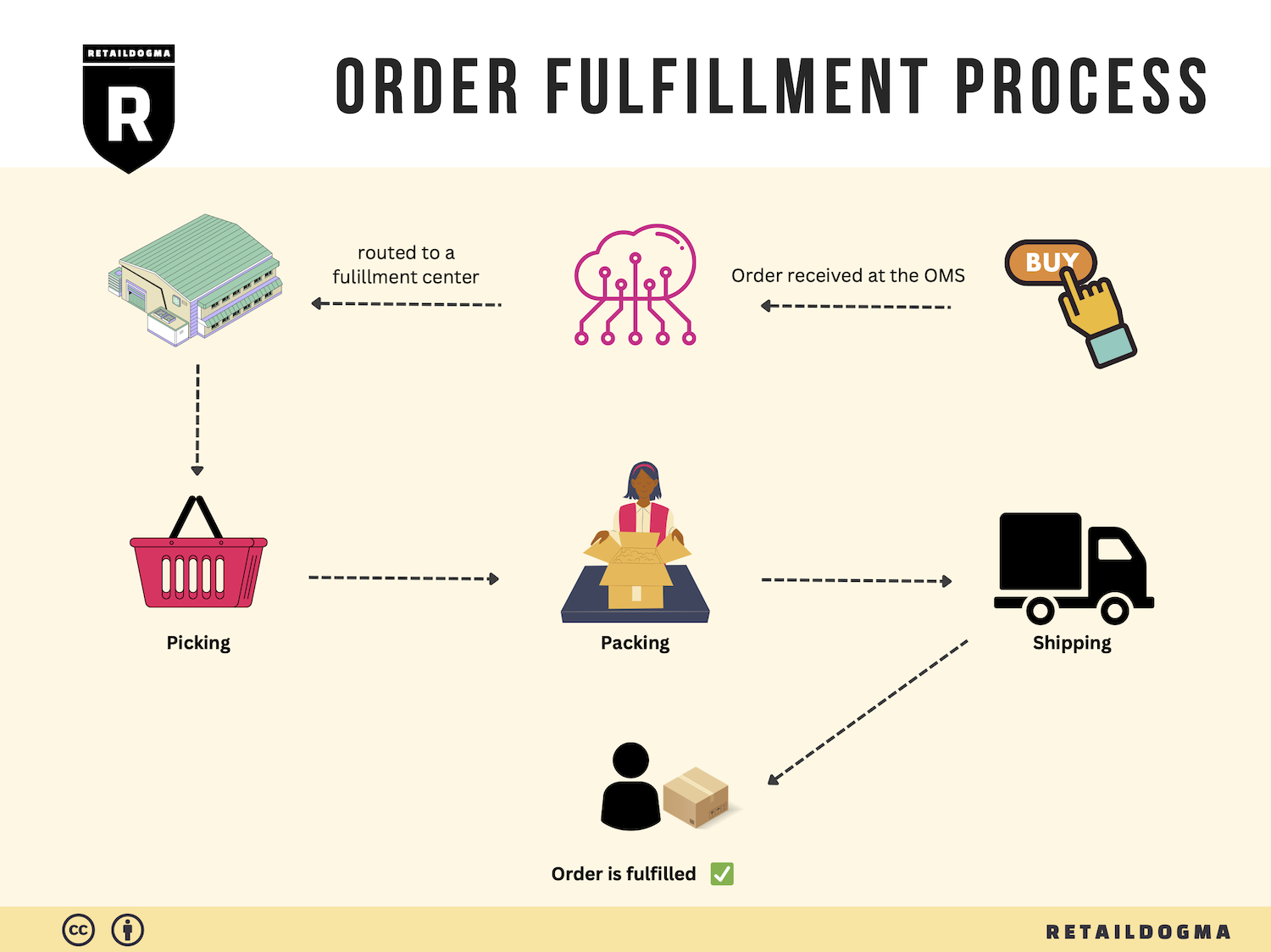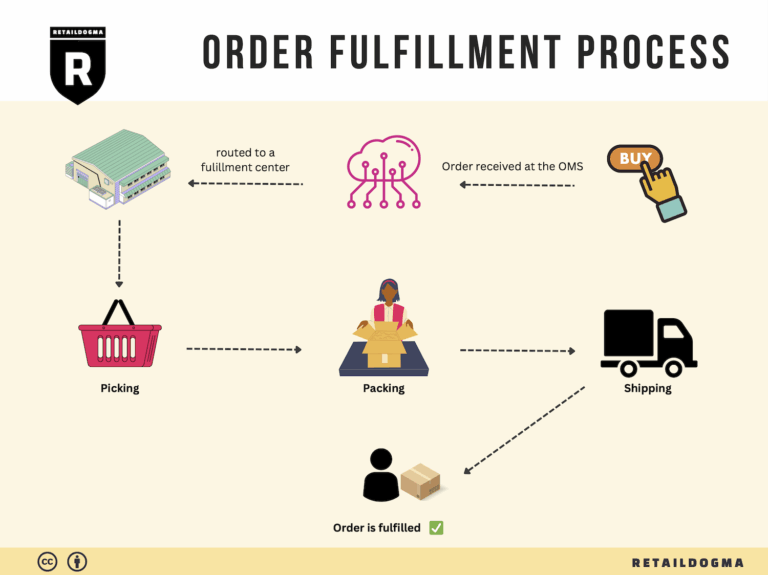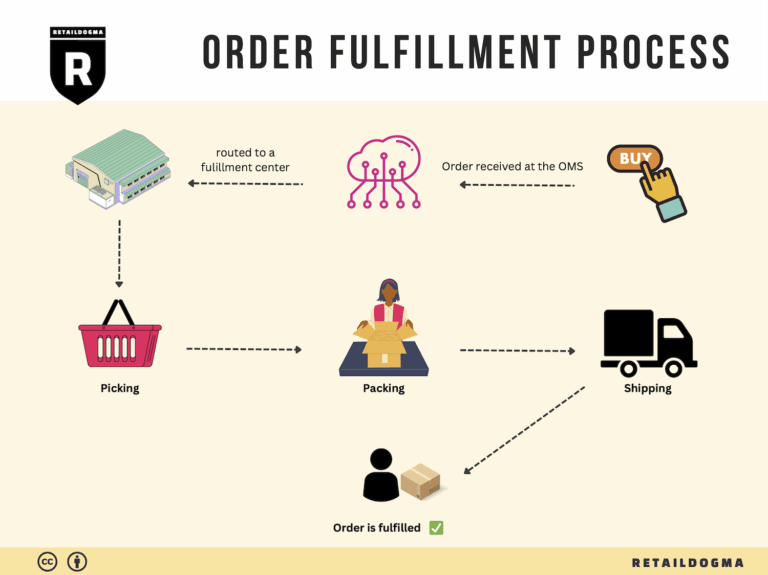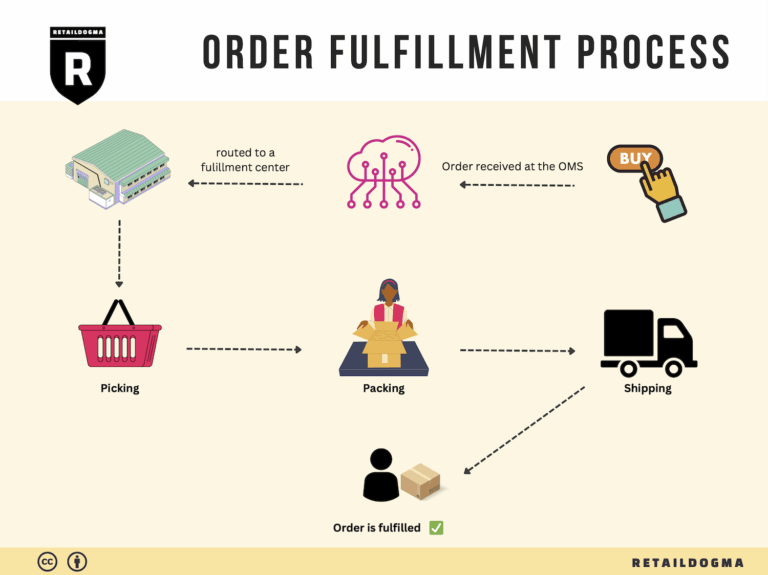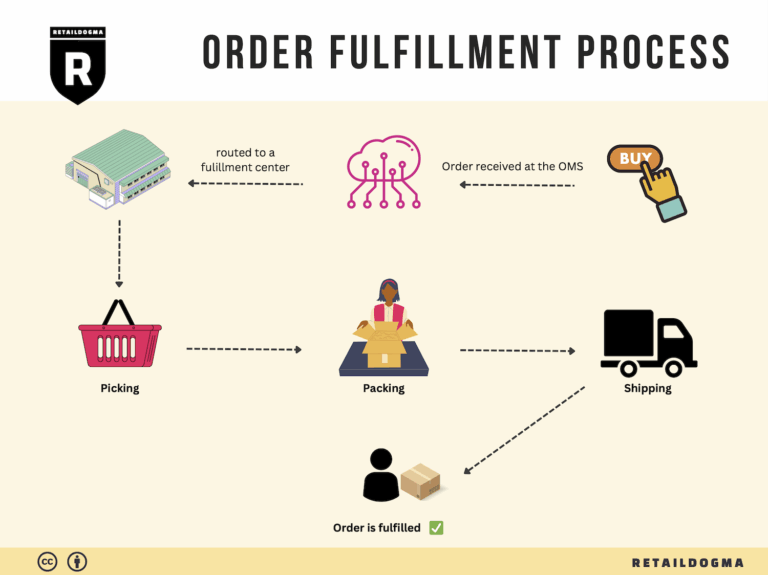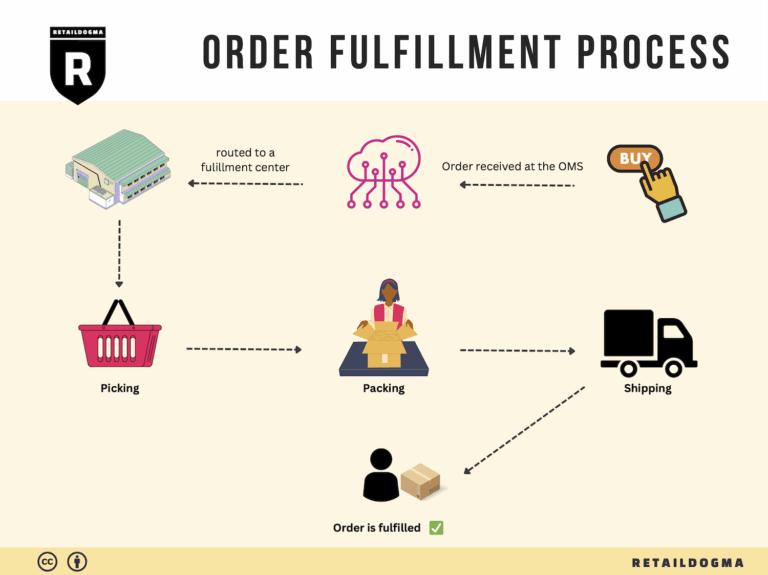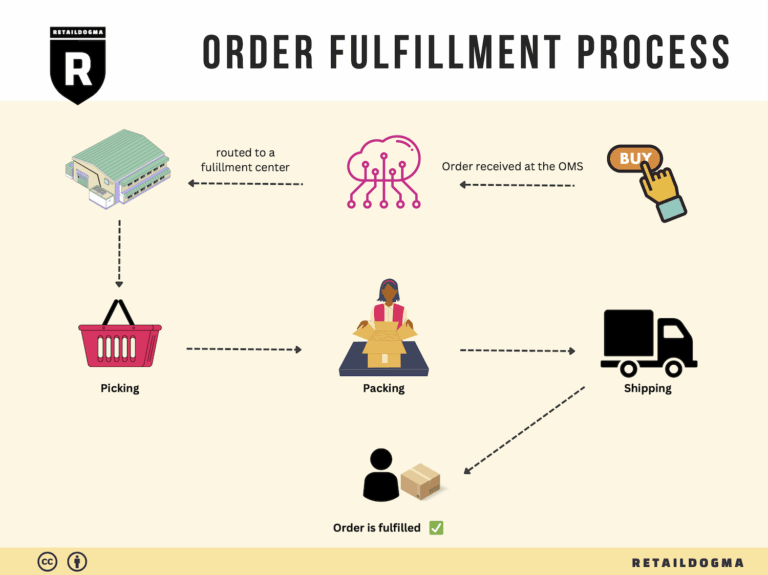What Is A Fulfillment Center? A Complete Guide (2025)
What is E-commerce Fulfillment? An Introduction for Growing Businesses
Understanding E-commerce Fulfillment: A Key to Scaling Your Business
As a growing e-commerce business owner, you may find yourself grappling with the complexities of packing and shipping orders. The excitement of increasing sales can quickly turn into stress when faced with the logistical challenges of getting products into the hands of customers. This is where e-commerce fulfillment comes into play, serving as the backbone of your operations and a crucial element in delivering an exceptional customer experience.
In simple terms, e-commerce fulfillment is the process of receiving, processing, and delivering orders to customers. It encompasses everything from inventory management to shipping logistics, ensuring that your products reach your customers in a timely and efficient manner. As your business scales, the intricacies of fulfillment can become overwhelming, leading to potential delays, errors, and customer dissatisfaction.
This guide aims to demystify the world of e-commerce fulfillment, providing you with the knowledge and tools necessary to streamline your logistics. We will explore various fulfillment models, such as Third-Party Logistics (3PL) and Fulfillment by Amazon (FBA), highlighting the unique advantages and considerations of each. Understanding these models will empower you to choose the right approach that aligns with your business goals.
In addition to fulfillment models, we will delve into the core services offered by fulfillment partners, including inventory management, order processing, shipping, and returns management. Each of these services plays a pivotal role in ensuring your operations run smoothly and efficiently.
Choosing the right fulfillment partner can be a daunting task, and this guide will provide practical insights into evaluating potential partners. We will cover key factors to consider, such as technology integration, shipping options, and customer service, helping you make informed decisions that drive your business forward.
Finally, we will address pricing structures associated with fulfillment services, enabling you to understand the costs involved and budget accordingly.
Our goal is to empower your business to make strategic, informed decisions about your logistics operations. By leveraging the insights and recommendations in this guide, you can optimize your fulfillment process, enhance customer satisfaction, and ultimately, scale your e-commerce business with confidence.
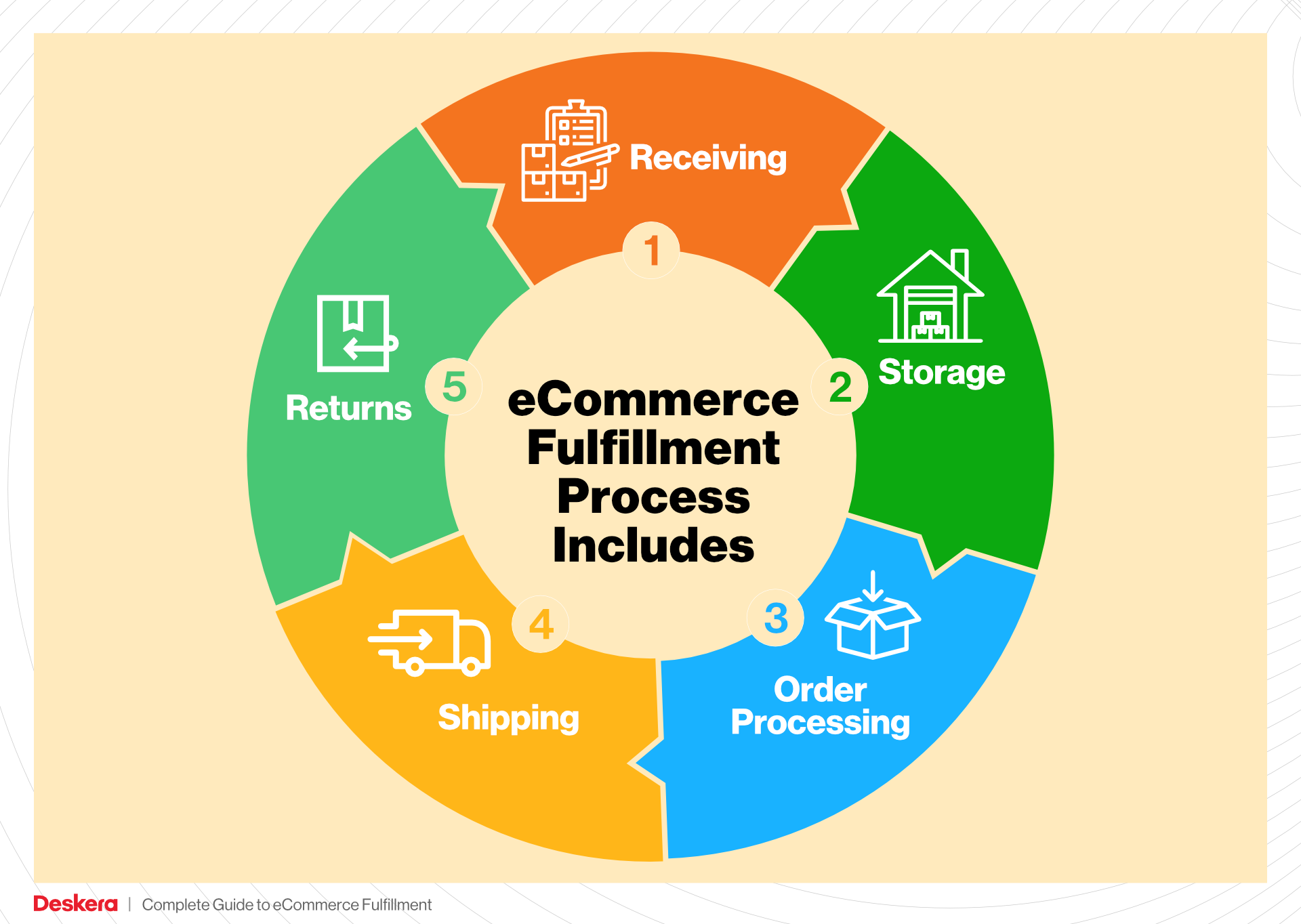
What You’ll Learn In This Guide
- What is E-commerce Fulfillment? An Introduction for Growing Businesses
- The Order Fulfillment Process: From ‘Buy’ Button to Customer’s Door
- Comparing Fulfillment Models: In-House vs. 3PL vs. Dropshipping
- A Deep Dive into Amazon FBA: Pros, Cons, and Who It’s For
- Core Services Offered by Fulfillment Centers
- How to Choose a Fulfillment Partner: A 6-Point Checklist
- Understanding Fulfillment Pricing: A Breakdown of Common Fees
- Frequently Asked Questions (FAQs) about Fulfillment
- Conclusion: Is Outsourcing Fulfillment the Right Move for Your Business?
- Important Disclaimer
The Order Fulfillment Process: From ‘Buy’ Button to Customer’s Door
1. Receiving Inventory
The first step in the order fulfillment process is receiving inventory. This involves the arrival of products at the fulfillment center, where they are checked against purchase orders to ensure accuracy. During this step, each product is assigned a unique identifier, often referred to as a Stock Keeping Unit (SKU). This identification is crucial as it simplifies tracking and inventory management throughout the fulfillment process.
Receiving inventory effectively is important because it sets the foundation for all subsequent steps. If discrepancies are found during this phase, they can lead to issues down the line, such as stockouts or delayed shipments, which can negatively impact customer satisfaction. A well-organized receiving process ensures that products are accounted for accurately, laid out for easy access, and ready for storage or order fulfillment.
2. Warehouse Storage
Once the inventory is received and verified, the next step is warehouse storage. In this phase, products are organized and stored in a way that maximizes space and facilitates efficient picking. Fulfillment centers often utilize advanced warehouse management systems (WMS) that help determine optimal storage locations based on SKU velocity—how quickly items sell. This can involve smart storage techniques, such as placing fast-moving items closer to the packing area.
Proper warehouse storage is essential as it directly impacts the speed and accuracy of order fulfillment. If items are stored inefficiently, it can lead to longer picking times, increased labor costs, and potential errors in order fulfillment. By strategically organizing inventory, businesses can enhance their operational efficiency, reduce fulfillment times, and ultimately improve customer satisfaction.
3. Order Picking
Order picking is the process of retrieving items from storage to fulfill customer orders. This step often utilizes pick lists—documents or digital tools that outline the items needed for each order. Efficient picking methods can include batch picking (collecting items for multiple orders at once) or zone picking (assigning specific areas of the warehouse to individual pickers).
The importance of order picking cannot be overstated; it is often the most labor-intensive part of the fulfillment process. Accurate and efficient picking ensures that customers receive the correct products in a timely manner. Mis-picks can lead to returns, customer dissatisfaction, and increased operational costs. Implementing technology, such as pick-to-light systems or mobile picking devices, can significantly enhance picking accuracy and speed, thereby improving overall fulfillment performance.

4. Order Packing
After items are picked, the next step is order packing. This involves securely packaging the products to ensure they arrive safely at the customer’s doorstep. During this phase, businesses must consider various factors, including the type of packaging materials used, dimensions of the package, and any branding elements that can enhance the customer experience, such as branded inserts or custom boxes.
Packing is a critical step because it directly impacts shipping costs and customer satisfaction. Efficient packing minimizes dimensional weight charges and ensures that products are not damaged during transit. Moreover, an appealing unboxing experience can leave a lasting impression on customers, encouraging repeat business. Therefore, investing in quality packaging solutions and processes is essential for maintaining a competitive edge in the e-commerce landscape.
5. Shipping & Delivery
The final step in the order fulfillment process is shipping and delivery. Once an order is packed, it is handed over to a carrier for transportation to the customer. This step involves selecting the best shipping method based on factors such as cost, delivery speed, and the destination. Utilizing a Virtual Carrier Network (VCN) can help businesses access competitive shipping rates and optimize delivery times.
Shipping and delivery are vital as they represent the last touchpoint with the customer. Timely and accurate delivery is crucial for maintaining customer satisfaction and loyalty. Delays or issues during this phase can lead to negative customer experiences and harm the brand’s reputation. Utilizing tracking systems allows customers to monitor their orders in real-time, providing transparency and peace of mind.
In summary, a well-executed order fulfillment process—from receiving inventory to shipping and delivery—ensures that e-commerce businesses can meet customer expectations and scale effectively. By focusing on each step and implementing best practices, businesses can enhance their operational efficiency and drive growth.
Comparing Fulfillment Models: In-House vs. 3PL vs. Dropshipping
Fulfillment Model Comparison
| Model | Who Handles Inventory | Best For (Business Stage) | Key Advantage | Key Disadvantage |
|---|---|---|---|---|
| In-House Fulfillment | The business itself | Startups and small brands | Complete control over operations | High overhead costs |
| Third-Party Logistics (3PL) | Specialized providers | Scaling and established brands | Access to expertise and technology | Less control over inventory |
| Dropshipping | Suppliers | New and small businesses | Low upfront investment | Lower profit margins |
In-House Fulfillment
In-house fulfillment involves managing all aspects of the logistics process within the company itself. This includes handling inventory, warehousing, order processing, packing, and shipping directly from the business’s location. This model is particularly beneficial for startups and small brands that want to maintain complete control over their operations and customer experience. By keeping fulfillment in-house, businesses can ensure quality control, personalize packaging, and provide direct customer service. However, this model has significant drawbacks, primarily associated with high overhead costs. Managing a warehouse, hiring staff, and investing in necessary technology can drain resources, especially for smaller businesses. Additionally, as order volumes increase, the in-house model can quickly become strained, leading to inefficiencies and potential service failures.
Third-Party Logistics (3PL)
Third-party logistics (3PL) is a fulfillment model where businesses outsource their logistics operations to specialized providers. 3PL companies handle everything from warehousing and inventory management to order processing and shipping. This model is ideal for scaling and established brands that require efficiency and expertise in their logistics processes. The key advantage of using a 3PL is the access to advanced technology and logistics expertise that can streamline operations, reduce shipping costs, and improve delivery times. Many 3PL providers, like ShipMonk and ShipBob, offer global fulfillment networks, allowing businesses to store inventory closer to their customers and optimize shipping routes. However, a significant disadvantage is the reduced control over inventory and fulfillment processes. Businesses must rely on the 3PL to maintain quality and accuracy, which can be a concern if the provider does not meet the brand’s standards.
Dropshipping
Dropshipping is a fulfillment model where the retailer does not keep goods in stock but instead transfers customer orders and shipment details to the manufacturer or wholesaler, who then ships the products directly to the customer. This model is particularly appealing for new and small businesses due to its low upfront investment and minimal risk. Entrepreneurs can sell a wide variety of products without the need to invest in inventory or warehouse space. The ability to quickly pivot and test new products without financial commitment makes dropshipping an attractive option for many. However, the key disadvantage lies in the lower profit margins typically associated with dropshipping. Since the retailer does not handle inventory, they often have to rely on suppliers for quality and delivery, which can lead to inconsistent customer experiences. Additionally, because many retailers may use the same suppliers, it can be challenging to differentiate one’s offerings in a saturated market.
Conclusion
Choosing the right fulfillment model depends on various factors, including business size, growth stage, and operational priorities. In-house fulfillment offers control but at a high cost, while 3PL provides efficiency and expertise for scaling businesses but may sacrifice some level of control. Dropshipping presents a low-risk entry point for new businesses but often results in lower profit margins and potential quality issues. Understanding these models will empower e-commerce business owners and operations managers to select the fulfillment strategy that aligns best with their growth objectives and operational capabilities.
A Deep Dive into Amazon FBA: Pros, Cons, and Who It’s For
Understanding Fulfillment by Amazon (FBA)
Fulfillment by Amazon (FBA) is a service that allows e-commerce sellers to store their products in Amazon’s fulfillment centers. In turn, Amazon takes care of storage, packaging, shipping, and customer service for those products. This means that when a customer places an order for a product, Amazon handles the entire fulfillment process, including returns. For sellers, this can significantly streamline operations, allowing them to focus more on growth and marketing rather than logistics.
How FBA Works
-
Setup and Inventory: Sellers begin by creating an Amazon seller account and enrolling in the FBA program. They then send their inventory to Amazon’s warehouses. Amazon provides guidelines on how to prepare and package products to meet their standards.
-
Storage: Once the inventory is received at Amazon’s fulfillment centers, it is stored until sold. Sellers can track their inventory levels through the Amazon Seller Central dashboard.
-
Order Fulfillment: When a customer orders a product, Amazon picks, packs, and ships the item directly to the customer. This process often includes using sophisticated technology and automation to ensure efficiency and accuracy.
-
Customer Service and Returns: Amazon also manages customer inquiries and handles returns, providing a seamless experience for customers. This means that sellers can rely on Amazon’s established customer service protocols, which can enhance customer satisfaction.
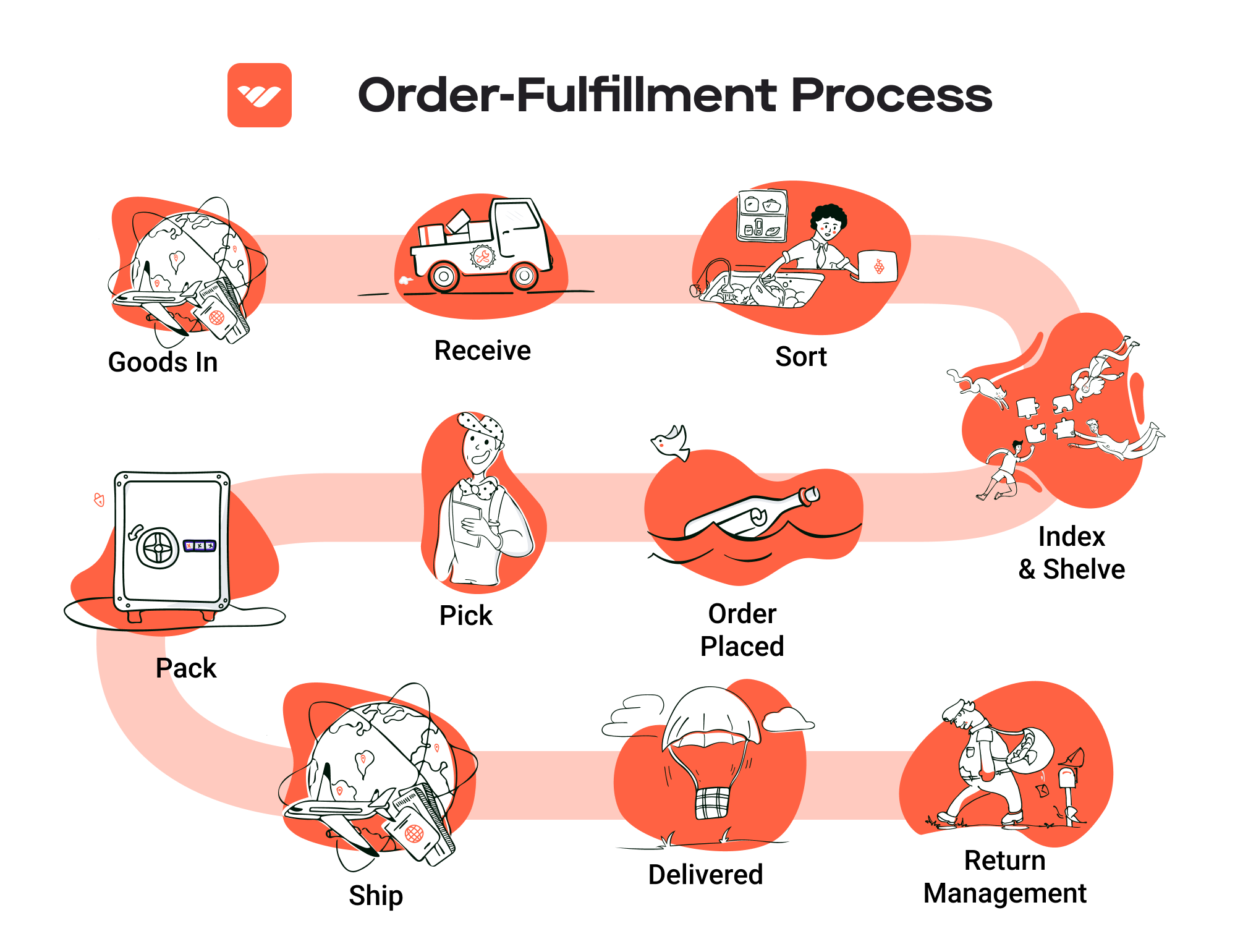
-
Payment: After the sale, Amazon deducts its fees and disburses the remaining funds to the seller, typically on a bi-weekly basis.
Pros of Using FBA
1. Prime Eligibility
One of the most significant advantages of FBA is that products become eligible for Amazon Prime. This can substantially increase sales since Prime members often prefer Prime-eligible products for the fast and free shipping options.
2. Enhanced Customer Trust
Utilizing FBA can boost consumer confidence. Products fulfilled by Amazon are backed by Amazon’s customer service and return policies, which can be a deciding factor for many shoppers. This trust can lead to higher conversion rates and increased customer loyalty.
3. Multi-Channel Fulfillment
FBA allows sellers to fulfill orders from multiple channels, not just Amazon. This means that if a seller has an e-commerce site or sells on other platforms (like eBay or Etsy), they can use FBA to handle those orders as well. This centralizes logistics and simplifies inventory management.
4. Efficient Logistics
Amazon’s extensive logistics network means that orders can often be delivered faster than if a seller managed their own fulfillment. This can be a competitive edge, especially for sellers in crowded marketplaces.
5. Scalability
FBA offers scalability for growing businesses. As sales increase, sellers can easily send more inventory to Amazon without having to invest in their own warehousing or fulfillment capabilities.
Cons of Using FBA
1. High Fees
While FBA can streamline operations, it comes at a cost. Amazon charges various fees, including storage fees for inventory stored in their warehouses and fulfillment fees for each order processed. These costs can add up, particularly for low-margin products.
2. Strict Inventory Management
Sellers must adhere to Amazon’s strict inventory management policies. This includes guidelines on how to prepare and label products, as well as limitations on how much inventory can be stored at a time. Failing to comply can lead to penalties or restrictions on selling.
3. Commingling Risks
FBA products can be commingled, meaning that inventory from different sellers can be mixed together in the same warehouse. This can create challenges if a customer receives a defective product or if there are issues with counterfeit items. Sellers are responsible for ensuring their products meet quality standards, which can complicate matters.
4. Limited Control
While FBA simplifies fulfillment, it also means that sellers have less control over the shipping process. Issues like delays, lost inventory, or customer service problems are handled by Amazon, which can be frustrating for sellers who prefer to manage these aspects themselves.
5. Inventory Limits
Amazon imposes limits on how much inventory can be sent to its warehouses, particularly for new sellers or during peak seasons. This can restrict a seller’s ability to scale up operations quickly in response to demand.
Who is FBA Best For?
Fulfillment by Amazon can be an excellent fit for various types of sellers, but it is particularly advantageous for:
-
Small to Medium-Sized Businesses: Sellers looking to scale their operations without investing heavily in logistics infrastructure can benefit from FBA’s streamlined processes.
-
Sellers of High-Demand Products: If a seller has products that sell quickly and have decent margins, FBA can help maximize visibility and sales potential.
-
Brands Seeking to Build Trust: New or less-known brands can gain credibility by leveraging Amazon’s established reputation and customer service.
-
Multi-Channel Sellers: Those who sell on multiple platforms and want a centralized fulfillment solution will find FBA’s multi-channel fulfillment capabilities especially beneficial.
-
Sellers with Seasonal Products: FBA can help sellers manage fluctuations in inventory without the burden of maintaining their own warehousing.
In conclusion, while Fulfillment by Amazon offers a range of benefits, including increased sales potential and simplified logistics, it’s crucial for sellers to weigh these against the associated costs and operational limitations. For many, the pros can significantly outweigh the cons, especially in a competitive e-commerce landscape.
Core Services Offered by Fulfillment Centers
Inventory Management & Warehousing
Effective inventory management and warehousing are foundational components of any successful e-commerce operation. Fulfillment centers provide dedicated space to store products, along with sophisticated systems to track inventory levels, manage stock rotations, and forecast demand.
What it is: Fulfillment centers utilize advanced Warehouse Management Systems (WMS) to oversee inventory from the moment it arrives until it is shipped out to customers. This includes real-time tracking of stock levels, monitoring expiration dates, and identifying trends in product sales.
Benefits: By outsourcing inventory management to a fulfillment center, e-commerce businesses can significantly reduce the overhead costs associated with maintaining their own warehouse. This not only minimizes the capital tied up in inventory but also allows businesses to benefit from the expertise of fulfillment providers in optimizing storage space and inventory turnover. Moreover, accurate inventory management leads to improved order accuracy, reduced stockouts, and enhanced customer satisfaction, as customers receive their orders promptly and without error.
Pick and Pack Services
The pick and pack process is a crucial step in the fulfillment chain that directly impacts delivery speed and accuracy. Fulfillment centers specialize in efficiently selecting items from inventory and preparing them for shipment.
What it is: Pick and pack services involve retrieving items from the warehouse based on customer orders, packing them appropriately, and preparing them for shipping. This process can be highly automated, utilizing technology such as pick-to-light systems and automated sorting to ensure accuracy and speed.
Benefits: Outsourcing pick and pack operations enables e-commerce businesses to scale quickly without the need to invest in additional labor or infrastructure. Fulfillment centers can handle fluctuating order volumes, especially during peak seasons, ensuring that orders are processed promptly. Furthermore, the use of technology in this process minimizes human error, resulting in fewer returns and exchanges, which can be costly and damaging to customer relationships.
Kitting and Assembly
Kitting and assembly services offered by fulfillment centers allow e-commerce businesses to sell bundled products or custom configurations without the hassle of managing the assembly process in-house.
What it is: Kitting involves gathering various products into a single package or “kit” before shipping. This can include combining multiple items into a gift set, creating subscription boxes, or assembling products that require multiple components. Fulfillment centers can manage this process efficiently, ensuring that all items are included and correctly packaged.
Benefits: By utilizing kitting and assembly services, e-commerce businesses can enhance their product offerings and improve customer experience. Bundled products often attract higher average order values and can lead to increased sales. Additionally, outsourcing this process allows businesses to focus on their core operations, such as marketing and product development, rather than the logistical complexities of assembling products.
Returns Management (Reverse Logistics)
Returns management is an essential aspect of e-commerce that can significantly affect customer satisfaction and overall operational efficiency. Fulfillment centers provide specialized services to handle returns seamlessly.
What it is: Returns management, or reverse logistics, involves processing returned items, restocking them, and managing the associated customer communications. Fulfillment centers typically offer streamlined processes for issuing return labels, tracking returns, and updating inventory systems automatically.
Benefits: A well-managed returns process is crucial for maintaining customer loyalty in the competitive e-commerce landscape. By outsourcing returns management to fulfillment centers, businesses can ensure that returns are handled quickly and efficiently, minimizing the impact on cash flow and customer satisfaction. Furthermore, data collected during the returns process can provide valuable insights into product performance and customer preferences, enabling businesses to make informed decisions about inventory and product offerings.
In summary, partnering with a fulfillment center for these core services not only streamlines operations but also enables e-commerce businesses to scale effectively. By leveraging the expertise and resources of fulfillment providers, companies can focus on growth and customer engagement while ensuring that their logistics and fulfillment processes run smoothly.
How to Choose a Fulfillment Partner: A 6-Point Checklist
Location & Warehouse Network
Choosing a fulfillment partner with an optimal location and warehouse network is crucial for ensuring timely deliveries and reducing shipping costs. The proximity of warehouses to your customers directly impacts shipping times and expenses.
Why It’s Important:
– Reduces transit time, leading to quicker delivery.
– Lowers shipping costs by minimizing distance.
– Enhances customer satisfaction through reliable delivery.
Questions to Ask:
– What is the geographical coverage of your warehouse network?
– Can you split inventory across multiple locations?
– How do you determine the best shipping location for an order?
Technology & Integrations
In today’s e-commerce landscape, technology plays a pivotal role in streamlining operations. A fulfillment partner should have robust technology that integrates seamlessly with your existing systems, providing real-time visibility and control over your logistics.
Why It’s Important:
– Facilitates efficient order processing and inventory management.
– Allows for tracking and reporting, enhancing operational transparency.
– Enables integration with various sales channels (e.g., e-commerce platforms, marketplaces).
Questions to Ask:
– What warehouse management system (WMS) do you use, and how does it integrate with my e-commerce platform?
– Can your technology support omnichannel fulfillment?
– What reporting features are available for tracking inventory and order status?
Specializations (e.g., Cold Storage, Oversized Items)
Different e-commerce businesses have unique needs based on their product types. If you deal with specific requirements such as cold storage for perishables or oversized items, it’s essential to partner with a provider experienced in those areas.
Why It’s Important:
– Ensures compliance with regulatory standards for specialized products.
– Provides tailored handling and storage solutions, reducing the risk of damage.
– Enhances efficiency in managing unique inventory needs.
Questions to Ask:
– Do you have specialized facilities for my type of products?
– What measures do you have in place for temperature-sensitive items?
– How do you handle oversized or heavy products in your fulfillment process?
Scalability & Capacity
As your business grows, your fulfillment needs will likely change. A suitable partner should have the capacity to scale operations alongside your growth, ensuring that you can meet increasing demand without compromising service quality.
Why It’s Important:
– Prevents operational disruptions during peak seasons or sudden growth.
– Allows for flexibility in managing fluctuating order volumes.
– Facilitates long-term planning without the need to switch providers.
Questions to Ask:
– What is your current capacity, and how do you handle peak seasons?
– Can you provide examples of how you’ve supported clients during significant growth periods?
– What plans do you have for expanding your facilities or capabilities in the future?
Pricing and Contracts
Understanding the pricing structure and contract terms is vital for avoiding unexpected costs and ensuring a good return on investment. Transparent pricing models help you budget effectively and assess the financial viability of your partnership.
Why It’s Important:
– Helps in forecasting logistics costs accurately.
– Reduces the risk of hidden fees and charges.
– Ensures clarity on contract terms and conditions.
Questions to Ask:
– Can you provide a detailed breakdown of your pricing model?
– Are there any additional fees for services such as returns, storage, or special handling?
– What are the terms of the contract, and are there options for flexibility or renegotiation?
Customer Support & Reviews
Excellent customer support is a cornerstone of a successful fulfillment partnership. You need a provider that is responsive and proactive in addressing issues that may arise during the fulfillment process.
Why It’s Important:
– Ensures timely resolutions to any operational challenges.
– Builds a strong partnership based on trust and reliability.
– Provides you with insights and support for continuous improvement.
Questions to Ask:
– What is your customer support structure, and how can I reach you in case of issues?
– Do you have dedicated account managers for personalized support?
– Can you share testimonials or case studies from current or past clients?
Conclusion
Choosing the right fulfillment partner can significantly impact your e-commerce business’s efficiency, customer satisfaction, and overall growth. By carefully evaluating potential partners against this checklist, you can ensure that you select a provider that aligns with your specific needs and objectives. Take the time to ask the right questions, compare options, and make an informed decision that will set your business up for success in the competitive online marketplace.
Understanding Fulfillment Pricing: A Breakdown of Common Fees
Initial Setup Fees
Initial setup fees are one-time charges that cover the onboarding process when you begin working with a fulfillment provider. These fees typically include costs associated with integrating your e-commerce platform with the fulfillment center’s systems, inventory setup, and any necessary training or support. The fee amount can vary significantly based on the complexity of your operations and the level of customization required.
For example, if you’re a business with unique packaging requirements or a large SKU count, expect higher setup fees to account for additional time and resources needed for configuration. It’s advisable to clarify what specific services are included in the setup fee to avoid unexpected costs later on.
Receiving Fees
Receiving fees are charged each time a new shipment of inventory arrives at the fulfillment center. This fee is generally calculated based on the volume of products being received, which could be measured in pallets, cartons, or individual items.
The receiving process typically involves unpacking, inspecting, and entering items into the inventory management system. Some fulfillment centers may charge additional fees for special handling, such as inspecting for damages or sorting products by SKU. To manage these costs, it’s essential to plan shipments efficiently, consolidating multiple orders into fewer shipments whenever possible.
Storage Fees (per pallet/bin)
Storage fees are recurring charges for keeping your inventory in the fulfillment center’s warehouse. These fees are usually calculated on a per-pallet or per-bin basis and can vary based on the type of storage required—standard or climate-controlled.
The fee structure may also include tiered pricing, where the cost per pallet decreases as you store more pallets. Therefore, understanding your inventory turnover rate is crucial; if your products move quickly, you may save significantly compared to slower-moving items that incur storage fees for longer periods. It’s advisable to regularly assess your inventory levels and consider strategies like promotional sales to reduce excess stock.
Pick & Pack Fees (per item/order)
Pick and pack fees are charged for the process of selecting items from storage and preparing them for shipment. This fee is typically calculated per item or per order, depending on the fulfillment center’s pricing model.
The picking process involves locating the ordered items, while packing includes boxing them up and preparing them for shipment. Some providers may offer volume discounts for businesses with higher order quantities or may have tiered pricing based on the complexity of the packing process (e.g., standard packing vs. custom packaging). To minimize these costs, consider optimizing your product offerings and order sizes, making it easier for the fulfillment center to process orders efficiently.
Shipping Fees
Shipping fees are one of the most variable costs in fulfillment pricing, influenced by factors such as package weight, dimensions, shipping speed, and destination. Fulfillment centers often have negotiated rates with carriers, which can help reduce costs for your business.
Shipping fees can be calculated in several ways, including flat-rate pricing, weight-based pricing, or zone-based pricing, where costs vary based on the distance to the delivery location. To ensure you get the best shipping rates, it’s essential to discuss options with your fulfillment provider and explore ways to optimize shipping, such as using regional warehouses to reduce shipping distances and costs.
Tips for Getting an Accurate Quote
-
Be Transparent: Provide detailed information about your business model, product types, order volumes, and any special requirements to get a comprehensive quote.
-
Understand the Fee Structure: Ask potential fulfillment partners to explain their pricing models clearly, including any variable costs that may arise during peak seasons.
-
Request Custom Scenarios: If possible, request quotes based on different scenarios, such as high-volume sales events or seasonal fluctuations, to understand how costs might change.
-
Evaluate Multiple Providers: Don’t settle for the first quote. Compare multiple fulfillment centers to find the best fit for your needs, considering both costs and service quality.
-
Inquire About Hidden Fees: Always ask about potential hidden charges that might not be included in the initial quote, such as return processing fees or penalties for inventory overstays.
By understanding these common fulfillment pricing models and following these tips, you can make informed decisions that align with your business goals and help manage your logistics costs effectively.
Frequently Asked Questions (FAQs) about Fulfillment
1. What is a fulfillment center?
A fulfillment center is a specialized warehouse designed to manage the storage, packing, and shipping of products on behalf of e-commerce businesses. Unlike traditional warehouses, fulfillment centers focus on order processing and logistics, ensuring timely delivery to customers.
2. What is 3PL fulfillment?
Third-Party Logistics (3PL) fulfillment refers to outsourcing your logistics operations to a specialized provider. A 3PL partner manages warehousing, inventory, order processing, and shipping, allowing you to focus on growing your business without the complexities of logistics.
3. How does a fulfillment company work?
Fulfillment companies handle the entire process of order fulfillment. When a customer places an order, the fulfillment center picks, packs, and ships the product directly to the customer. They also manage inventory levels, returns, and sometimes even customer service, using technology to streamline operations.
4. What’s the difference between a warehouse and a fulfillment center?
While both warehouses and fulfillment centers store products, their purposes differ. Warehouses primarily focus on long-term storage and inventory management, while fulfillment centers are geared toward processing orders quickly and efficiently, ensuring fast delivery and customer satisfaction.
5. How much do fulfillment services cost?
Fulfillment service costs vary based on factors such as order volume, storage space, and specific services needed (like kitting or custom packaging). Typically, costs include storage fees, picking and packing fees, and shipping charges. It’s essential to get quotes from multiple providers to compare pricing structures.
6. What are the benefits of using a fulfillment service?
Using a fulfillment service can significantly enhance your business by reducing overhead costs, improving shipping times, and allowing you to scale operations without investing in physical infrastructure. Additionally, a fulfillment partner can provide expertise in logistics and access to better shipping rates.
7. How do I choose the right fulfillment partner?
When selecting a fulfillment partner, consider factors such as their technology capabilities, shipping options, location of warehouses, customer service reputation, and scalability. It’s also beneficial to assess their experience with businesses in your industry and any additional services they offer, like returns management or international shipping.
8. Can I integrate my online store with a fulfillment service?
Yes, most fulfillment services offer integration with popular e-commerce platforms, allowing for seamless order processing. This integration helps automate inventory management, order tracking, and updates, ensuring that your operations run smoothly.
9. What happens if a customer wants to return a product?
Fulfillment companies typically provide reverse logistics solutions to manage returns efficiently. This may include offering prepaid return labels, automating the return process, and providing detailed reporting to help you understand return reasons and trends.
10. How can fulfillment services help during peak seasons?
Fulfillment services are equipped to handle fluctuations in order volume, especially during peak seasons like holidays. They often have the infrastructure and workforce in place to manage increased demand, ensuring that orders are processed quickly and accurately, thus maintaining customer satisfaction during busy times.
Conclusion: Is Outsourcing Fulfillment the Right Move for Your Business?
Evaluating the Benefits of Outsourcing Fulfillment
Outsourcing your fulfillment can be a game-changer for e-commerce businesses looking to scale efficiently. By partnering with a dedicated fulfillment service, you gain significant advantages that can streamline operations and enhance customer satisfaction.
First and foremost, outsourcing fulfillment saves you precious time. Handling inventory management, order processing, and shipping can be overwhelming, especially as your order volume grows. A third-party logistics (3PL) provider takes these burdens off your plate, allowing you to focus on core business activities like marketing and product development.
Scalability is another crucial benefit. A proficient fulfillment partner can easily adapt to your business’s changing demands, whether during seasonal spikes or product launches. With access to advanced technology and a global network of warehouses, these providers ensure that your products reach customers quickly and cost-effectively. This agility can significantly enhance your brand’s reputation and customer loyalty.
Moreover, leveraging the expertise of a fulfillment partner means you benefit from industry best practices and the latest technology. From inventory management systems to automated sorting and packing, these services are designed to optimize efficiency and accuracy, reducing the likelihood of errors that can harm your business reputation.
However, the success of outsourcing fulfillment hinges on choosing the right partner. Research potential providers thoroughly, considering their track record, technology capabilities, and customer service. A good fulfillment partner should align with your business goals and offer the support necessary for sustainable growth.
Take Action Now
As you contemplate the potential of outsourcing fulfillment, take a moment to audit your current shipping process. Identify pain points and inefficiencies that could be alleviated through a partnership. By understanding your needs and exploring your options, you can make an informed decision that propels your e-commerce business to the next level. Don’t wait—evaluate your fulfillment strategy today and discover how the right partner can unlock new growth opportunities.
Important Disclaimer
⚠️ Important Disclaimer
The information in this guide is for educational purposes. Fulfillment services, pricing, and platform features change frequently. Always conduct your own due diligence and consult with providers directly before making business decisions.
